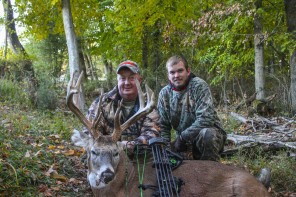Kentucky abounds with deer-hunting opportunities, and many would consider it a sleeper state for the DIY hunter. For the past decade it’s been a consistent producer of quality bucks on both public and private land. And that public land is found throughout the state, in areas big and small. Some of this land even offers preferential opportunities for bowhunters.

Across Kentucky you’ll find diverse habitats, from small farms broken up by wooded streams and woodlots to big forests. Many areas surrounding the numerous public reservoirs are wooded and offer excellent deer habitat: mast-producing trees and thick areas where bucks can reach maturity with little human interference.
Eleven wildlife management areas (WMAs) totaling a whopping 143,000 acres are set aside just for bowhunters. Archery season opens the first Saturday in September each year, which offers an excellent opportunity for anyone looking to wrap a tag around a velvet antler. (Crossbows are legal to use on these areas only during the crossbow season, which runs from Oct. 1 to the third weekend in October before closing for three weeks. It reopens in mid-November, during firearms season, and runs through Dec. 31.)
A few of these areas have short youth hunts and a couple have a two-day firearm season, so the nonresident hunter would be smart to time any trip around these dates. But four areas are fully reserved for bowhunting.
Nonresident tags are available over the counter and are still a bargain at $260. That total includes $140 for the annual license and $120 total for two statewide deer tags. Only one of the two deer can be an antlered buck. For a number of years Kentucky had a 15-inch spread minimum in place on the WMAs, but it’s been dropped for the 2017 season.
Some of these WMAs are relatively small and are surrounded by farmland. Soybean and alfalfa fields attract a lot of the deer, but wheat, corn, barley and grain sorghum are what really draw the whitetails. These fields, when in the right places, can offer the deer excellent feed. Forest-farm edges make ideal places for a bowhunter to view deer activity in late summer, as deer tend to feed…





